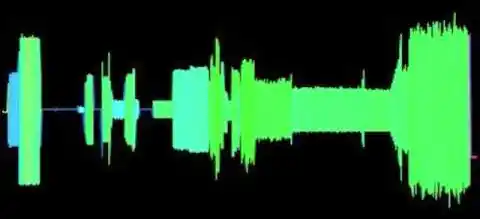Understanding the Iconic Dial Up Internet Sound
Before the internet became fast and easy to use, there was a time when connecting to the web was a bit more complicated. This was the era of dial-up internet. To go online, you had to connect your computer to a telephone line, and this process created a distinct and memorable sound known as the “dial-up sound.” This sound is a big part of internet history and was the gateway for many people to access the web for the first time.
In this post, we will take a closer look at the dial up internet sound, understanding what it was, why it mattered, and how it worked. We will also explore the history of dial-up internet, how it compares to today’s high-speed internet, and why it eventually became outdated. By the end, you will have a clear understanding of the role that the dial-up sound played in the early days of the internet.

What Was Dial-Up Internet?
Understanding Dial-Up
Dial-up internet was one of the earliest ways that people connected to the internet from their homes. It worked by using the same telephone lines that people used for making regular phone calls. This meant that when you wanted to use the internet, your computer had to “dial” a special number to connect to the internet.
You May Love To Read
- How to Close IDFC First Bank Loan Account: Quick Guide 2024
- How to Download Government Documents on WhatsApp 2024
- PVC Aadhaar Card Status: How to Check and What to Expect
- Loan Disbursement Request Letter Sample to Bank Manager for Any Bank 2024
- Why SBI Credit Card Is the Only Card You’ll Ever Need – Learn More Here!
This connection process was not instant. Instead, it involved a series of sounds and signals that your computer and the internet service provider (ISP) sent to each other. These sounds were necessary for the two to communicate and establish a connection.
The Role of the Telephone Line
The telephone line was essential for dial-up internet because it was the only way to connect to the web. However, this also meant that you could not use the phone and the internet at the same time. If someone needed to make a phone call, the internet connection had to be disconnected. This was one of the challenges of using dial-up.
The Dial-Up Sound
What the Sound Meant
The dial-up sound was more than just a series of random noises. It was a sequence of signals that allowed your computer to connect to the internet. When you started the connection process, your computer first sent out a tone to let the ISP know that it wanted to connect. The ISP would then respond with its own tones, and the two would continue this exchange until a connection was established.
Breaking Down the Dial-Up Sound
The dial-up sound had several parts, each with its own purpose:
- Dialing Tone: This was the sound of your computer dialing the number provided by the ISP. It was similar to the sound you hear when making a phone call.
- Handshake Sounds: After the dialing tone, you would hear a series of beeps and hisses. This was the “handshake” between your computer and the ISP, where they were agreeing on how to communicate.
- Connection Confirmation: Finally, the sound would settle into a steady noise, indicating that the connection was successful, and you were now online.
Each part of the dial-up sound was important for making sure that the connection worked properly. If there was a problem with any part of the sound, the connection might not be established, and you would have to try again.
Why the Sound Was Important
The dial-up sound was a crucial part of the connection process because it let you know that your computer was successfully connecting to the internet. It was also a way to troubleshoot problems. If the sound didn’t play correctly or if it stopped suddenly, it meant that there was an issue with the connection.
Many people who used dial-up internet became very familiar with this sound because they heard it every time they connected to the web. It became a regular part of their internet experience.
The History of Dial-Up Internet
The Early Days
The internet started to become available to the public in the late 1980s and early 1990s. During this time, dial-up was the most common way for people to connect to the internet. Since there were no high-speed connections available, dial-up was the best option for getting online.
You May Love To Read
- Meta AI Assistant: Most Advanced AI Assistant Powered by Llama 3
- Cashless Economy in India: Adopt Digital Transactions for a Better Future 2024
- How to Create Stock Market Account: Complete Expert Guide
- What is a Keyword (Keyword Kya Hota Hai) – A Simple Guide for Beginners
- Apple Watch Touch Screen Not Working? Here’s How to Fix It
Growth of Dial-Up Usage
As more people began to use the internet, dial-up connections became more widespread. ISPs started offering dial-up services to more households, and soon, millions of people around the world were using dial-up to access the web. The dial-up sound became a familiar part of life for these users.
The Peak of Dial-Up
Dial-up internet reached its peak usage in the late 1990s and early 2000s. During this period, almost everyone who used the internet relied on dial-up connections. Although it was slower than what we have today, it was the standard method for getting online at the time. The dial-up sound was heard in homes, schools, and offices around the world.
Comparing Dial-Up to Modern Internet
Speed Differences
One of the biggest differences between dial-up and modern internet is speed. Dial-up connections were very slow, with a maximum speed of about 56 kbps (kilobits per second). Today, internet speeds are much faster, often reaching hundreds of megabits per second (Mbps) or even gigabits per second (Gbps).
Because dial-up was so slow, activities like downloading files, watching videos, or even loading web pages could take a long time. In contrast, the modern internet allows us to do these things almost instantly.
Availability and Accessibility
Dial-up internet was only available where there were telephone lines. This meant that people living in areas without telephone service could not access the internet. In contrast, today’s internet is much more widely available. We have wireless connections, satellite internet, and other technologies that allow people to go online from almost anywhere.
Impact on Daily Life
Dial-up internet had a significant impact on daily life. Because it used the phone line, people had to plan their internet usage around phone calls. The internet connection had to be disconnected if someone needed to make or receive a call. This often led to inconvenience and frustration, especially in homes with only one phone line.
Today’s internet, on the other hand, is always available and doesn’t interfere with phone calls. This has made using the internet much more convenient and has become a regular part of daily life.
Why Dial-Up Became Outdated
Technological Advancements
As technology improved, new methods for connecting to the internet were developed. Broadband internet, including DSL, cable, and fiber-optic connections, started to become available in the early 2000s. These new connections were much faster and didn’t require a phone line, making them more convenient for users.
The Decline of Dial-Up
As more people switched to broadband, the use of dial-up began to decline. By the late 2000s, most internet users had moved on from dial-up to faster and more reliable connections. The dial-up sound, once a common part of daily life, started to fade from people’s memories as it was no longer needed.
The Legacy of Dial-Up
Although dial-up internet is mostly obsolete today, it played a crucial role in the early development of the internet. It allowed millions of people to connect to the web for the first time and paved the way for the advanced internet technologies we use today. The dial-up sound remains a memorable part of this history.
How the Dial-Up Sound Is Remembered Today
Nostalgic Memories
For many people who used dial-up internet, the sound is remembered with a sense of nostalgia. It brings back memories of the early days of the internet when everything was new and exciting. Even though the connection was slow and sometimes frustrating, it was a gateway to a vast world of information and possibilities.
Cultural References
The dial-up sound has become a cultural reference in various forms of media. It has been used in movies, TV shows, and music to represent the early days of the internet. Some people even use the sound as a ringtone or notification on their phones as a fun reminder of the past.
A Piece of Internet History
Today, the dial-up sound is seen as a significant piece of internet history. It serves as a reminder of how far technology has come and how much the internet has evolved. For younger generations who never experienced dial-up, the sound is a curious artifact from a time before the internet was fast and always available.
Conclusion
The dial-up sound was more than just a series of noises; it was an essential part of the early internet experience. It symbolized the connection between your computer and the vast world of the internet and was a sound that millions of people heard every day. While dial-up internet is mostly a thing of the past, the sound remains a powerful reminder of the early days of the web.
As we reflect on the history of the internet, it is important to remember how dial-up played a significant role in bringing the internet into people’s homes. The dial-up sound may no longer be part of our everyday lives, but it will always hold a special place in the history of the internet.























